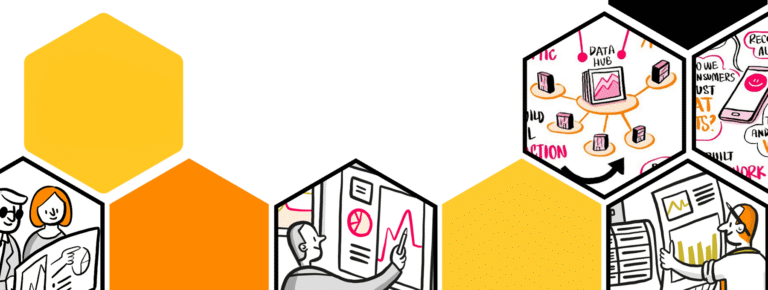Vaimo’s UX and Strategy Department (UK) recently took a trip to Manchester for a 1-day event on the benefits of user research with PRWD.
As advocates for user research, we believe in the importance of understanding how research can add value to products, and that learnings from user research are an indispensable asset to our teams and clients.
In this blog post, I’ll be running through the key user research takeaways from the session that should be taken into consideration when designing and building your customer experiences.
Benefits of user research
Why user experience is so important, and the place of user research in product development
Nowadays, it can be challenging to change companies’ mindsets from product led to user led. Customer-centricity is speaking to and listening to customers, and adapting products or services to better suit what they are looking for, both now and in the future.
When explaining the value of user research—and prioritising how to apply recommendations after analysing session observations—it’s important to think ahead and ask yourself if you are still going to need the new implementation in 5 years.
During the event, we reviewed a case study of a craft beer company that went through a research session. Afterwards, they had several recommendations but it was difficult for them to build a roadmap and identify which UX changes they should implement first (and which ones would provide the highest ROI).
One of the most common observations from the participants during the sessions was that in the product gallery on the product detail page, there was no possibility to find a picture of the back of the bottle with nutritional information and the brand story. The craft beer company was hesitant at first because the investment in a new whole photoshoot for all their products was big, but asking themselves if they would still need this feature in 5 years helped them to make the decision. Also, they could invest in a phased approach, photographing the best-selling beers first, for example.
The 10 Pillars of Customer-Centricity in User Research
User research provides an essential foundation for design strategy. User research should always precede a UX strategy because it helps eliminate unwarranted assumptions from the design process.
The 10 pillars of customer-centricity in user research can be divided into 2 main areas: first impressions and decision making.
First impressions: UX, USPs, Trust, Social Proof and Transparency.
Decision making: Clarity, Credibility, Usability, Differentiation and Innovation.
Research Experience: WHAT IS USER RESEARCH?
User research is a primary form of qualitative feedback. It’s where a company speaks to their customers and potential customers. Even though it’s often the most undervalued area of investment amongst businesses, it’s important to remember that it gives businesses a competitive advantage.
Generative user research is key and should constitute a full-fledged discovery phase, during which we should discover and analyse users’ behaviour, needs, and motivations to contribute context and insights to product strategy and design.
Often the roles of a user researcher and user designer are not clearly defined and this can lead to confusion.
The role of a user researcher is based on observing users in natural scenarios across multiple channels, including moderated user research and remote user research. User research is not to be confused with user testing.
A user experience designer usually observes user research, creates wireframes, visual designs and prototypes. They create concepts around user journeys. User experience design is a more technical role with knowledge of the principles of graphic design, colour theory, typography, hierarchy, visual grammar, design software, and often CSS or other coding skills required.
Why invest in user research?
Skipping the user-research stage because of time constraints—or because it’s difficult to demonstrate the tangible value of it to stakeholders—can have serious repercussions for companies. Is it possible to create a product if you don’t know what problem it will solve for your users? According to PRWD, these are the most common reasons why companies do not invest in user research:
1. “We don’t have enough time”
2. “We don’t have enough budget”
3. “We won’t learn anything new”
4. “We already have session recordings”
5. “We already have heat-maps”
And here are five solid reasons why companies should invest in user research:
1. You are not your customers
2. It provides a reality check
3. It allows you to take your blinkers off
4. It positively influences decision-makers
5. You gain valuable competitor insights
The Broader Business Benefits of User Research
User research provides an essential foundation for design strategy. It helps businesses to create an optimal product for users. Most importantly, it gives you the data to back your strategy and design decisions.
If the reasons above are not still convincing enough, there are also some broader benefits for businesses to invest in user research:
- Gain insights on competitors—nothing is stopping you researching competitor websites!
- Researching your and your competitor websites helps bring greater impact to the insights.
- Research done intelligently can help gain a rich understanding of brand perception, user motivations, buying behaviour and much more.
- When shared with the C-suite, video insights have the potential to initiate cultural change within an organisation (from being product led to being custom led).
- Multi-channel user research can provide insights for the wider team.
- Research insights can help inform a company’s acquisition strategy.
Business Impacts from User Research
To sum up, it’s a tragedy that our industry is not still fully aware of the value of UX research to offer customer-centric solutions to the problems we confront in product design. In our opinion, UX research is no longer optional. We must conduct UX research to ensure seamless, valuable user experiences.
At the event, we heard from many businesses about how user research has transformed their customer experience and business growth. Here are two that illustrate the power of user research: “We have had a significant change in the mindset since the user research 2 years ago. We are far more customer-centric as a business now,” and “This all makes me want to rip up our whole branding and rethink it from scratch!”
Interested in learning more about the role of user research in transforming your customer experience? Then get in touch with our dedicated UX Team today!







